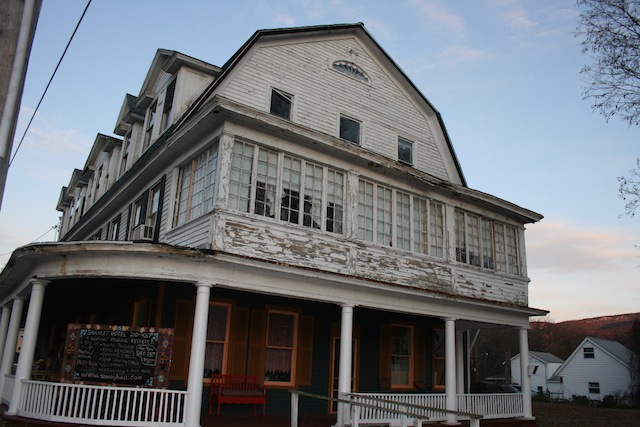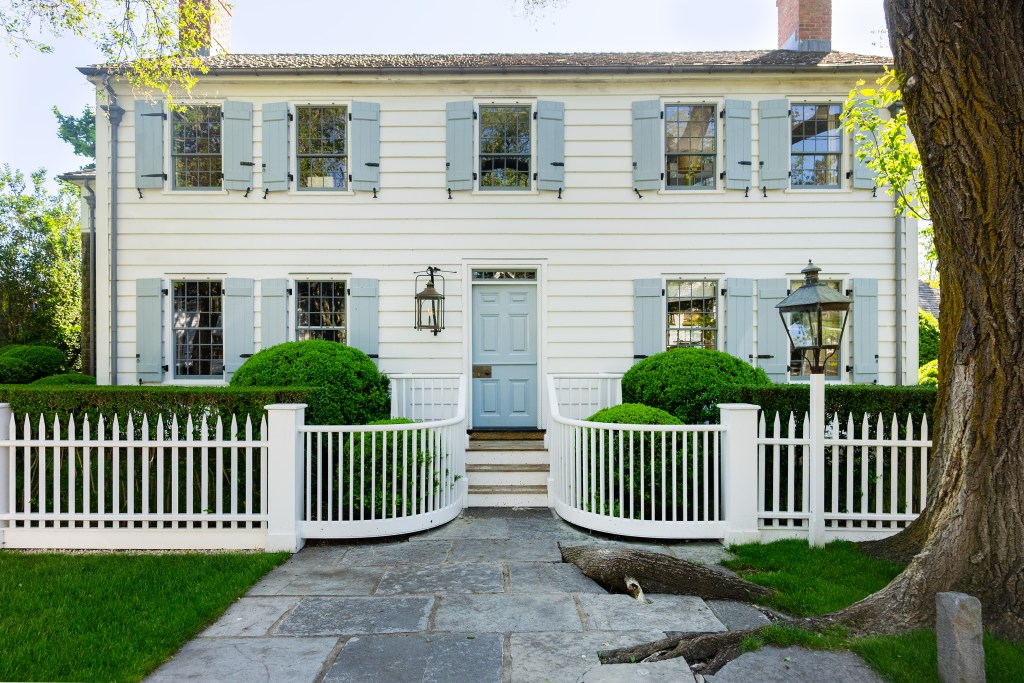Reflections of a South Fork Ghost Hunter

It took me some time to realize why I became a ghost hunter. I had several experiences growing up that solidified my belief and interest in the afterlife, but my need to doggedly explore the unknown really took shape when I learned my father had pancreatic cancer. Each day, as his body withered and his tumors grew, my desire to connect with the dead grew with them.
I absorbed every second of paranormal television shows and carefully read every word of every book I could find on the subject. I spent hundreds of dollars on electromagnetic field (EMF) meters, thermocouple and infrared thermometers, digital video and audio recorders, decibel meters, motion sensors—whatever I could find. Meanwhile my father continued to deteriorate and I, deep in my latest obsession and buried in research, was oblivious to the connection. The day after his last Christmas, I left for a week to investigate the historic hauntings and cemeteries in Salem, Massachusetts.
He died less than two months later. We’d installed a baby monitor in his room to make sure he could call for help while he was sick, and moments after my father’s soul left his body, the monitor began to squawk, as if someone was trying to speak through it. The front door opened and closed.
Had my focus been on beat poetry or video games instead of ghosts that day, I may never have noticed what happened. It was suddenly so obvious. I had thought the trend of paranormal television shows had rekindled my interest in ghost hunting, but it was always about his impending death. That’s how it started, anyway.
On television, ghost hunters stalk through the darkness in some of the world’s most haunted locales—castles in Ireland, decaying prisons and asylums, historic battlegrounds and sites of multiple murder, suicide and tragic accidental deaths. They come out of these places with astounding video, crystal clear recordings of ghostly voices and occasionally even demonic scratches, at once captivating and horrifying millions of viewers.
After more than five years of ghost hunting and dozens of investigations, including visits to some of the East Coast’s most notoriously haunted hot spots, I can say that these kinds of mind-blowing encounters can happen, but they’re exceedingly rare, and catching definitive proof is even more unlikely.
Real paranormal investigations are often boring and uneventful. They generally include hours of fumbling around in the dark, trying to manage five devices with two hands and calling out to no one, asking questions like, “Is anyone here with us?” or “We mean you no harm. What is your name?”
Usually we relive the monotony of the evening by listening to it all over again in real time, hoping that our recorders caught a voice answering those silly questions to no one in particular. And sometimes it happens, but to really enjoy investigating, you have to love these historic and often decrepit places or at least enjoy tinkering with the various pieces of equipment used to document experiences and track atmospheric changes.
The year after we visited Salem, my wife, Colleen, and I spent another winter vacation on the battlefields of Gettysburg, Pennsylvania, and there, at Little Round Top, where the Union beat back a Confederate assault, we finally caught a voice, also known as an EVP or electronic voice phenomenon. It was a windy and bitter cold New Year’s Eve, so we sought shelter within a little castle-like structure called the Pennsylvania Monument and began recording and asking questions there. Nothing seemed out of the ordinary, but when we listened to the recording later, a very quiet but clear voice pleaded for help. “Help me,” it said, perhaps unaware that it had died nearly 150 years before that night.
This seems minor compared to what one might see on TV, but we were over the moon with excitement. About a year later, we caught another voice answering a question “no” in the crumbling halls of Eastern State Penitentiary in Philadelphia. But that infamously haunted prison yielded no other evidence or experiences.
A good investigator will try to rule out logical sources of such voices, and we’ll always make sure to create an environment free of noise contamination and anything that might create a false positive on audio or video. You need to remain skeptical about any evidence, but I’ve also wondered whether being too skeptical has caused me to ignore strange things I have seen, heard and even smelled.
Members of Island Ghost Investigations—a group I joined after trying to run my own for some time—and I investigated an old church with many sightings and claims of paranormal activity here on the South Fork. The caretaker told me he was inexplicably locked into an old section of the building once, and when I approached the same area that night, my digital camera’s newly charged battery completely drained and my watch battery died. Most ghost hunters believe spirits use batteries and other electrical energy to help them manifest in some way. It would be easy to call this a coincidence because my watch battery never recovered, but my camera battery returned to its fully charged state as soon as I left that area. We also heard talking around the church and never found the source.
If I am too skeptical, these kinds of things could go unnoticed or I could simply explain them away, and I’m not sure it’s good to ignore the possibilities. In one home investigation in Sag Harbor, nothing happened all night, but suddenly for maybe a minute or less, the temperature fell and the EMF meter spiked and steadily climbed, then they both returned to the normal baseline numbers at the same moment. It was a small thing, but it had no natural explanation and, like the battery drain, ghost hunters believe spirits can affect EMF levels and temperature. The brief event provided some validation to the distraught and fearful homeowner, who had reported all manner of strange happenings in her house.
Even one of my favorite places to investigate—the very haunted and historic Shanley Hotel in Napanoch, NY—has yielded mixed results. The hotel is an old Dutch colonial that fell into disrepair during years of abandonment, but its new owners, Sal and Cindy Nicosia, have been slowly restoring the building. The Shanley’s many ghosts made themselves known during the restoration and it now attracts paranormal investigators and thrill-seekers from all around. The place has numerous quaint rooms, including a former bordello and speakeasy, and the third floor remains unfinished, so it’s especially creepy to investigate late into the night.
Over many investigations, our team has recorded disembodied voices talking to each other, we’ve had various personal experiences and I even captured a somewhat convincing photograph of what appears to be a head and face made of some kind of mist. I would tell anyone interested in ghost hunting to stay at the Shanley. After a night or two, you’ll either fall in love with it or be too scared or too bored to ever try investigating again.
Ghosts start to become less and less scary after you deliberately try to experience them and come back with nothing—especially when you do it in some of the most famously scary and haunted locations on earth. Some ghost hunters begin as total believers, but that absolute belief can fade when nothing ever happens time after time, investigation after investigation. Others begin as skeptics and find they believe just a bit more after all these little experiences add up. Either way, the world of ghost hunting and paranormal investigation is rarely what one expects it to be.
I actually believed deep down that I would connect with my father or perhaps see some perfect apparition that would confirm life does indeed go on after death. But years later I have more questions than when I began, and my belief in the afterlife has been shaken. So now I wait for the chance to investigate again and find that little piece of the puzzle or, if I’m lucky, that defining moment that stops me from questioning all the mysteries I’ve encountered before.



